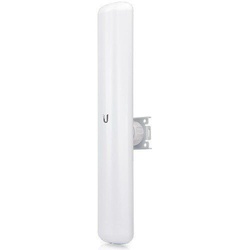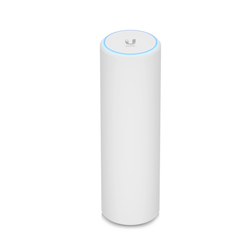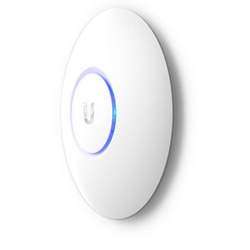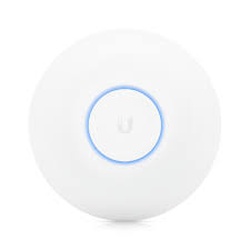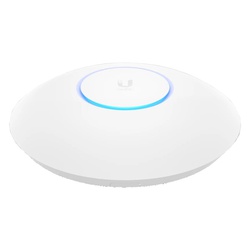
Ubiquiti UniFi nanoHD Access Point – 4×4 MU-MIMO 802.11ac Wave 2
by Ubiquiti
The Ubiquiti UniFi nanoHD Access Point is a high-performance wireless access point that provides reliable and fast Wi-Fi connectivity in a compact form factor. It supports the 802.11ac Wave 2 standard, which offers improved performance and efficiency compared to previous generations of Wi-Fi technology.
- 4x4 MU-MIMO: The access point supports 4x4 MU-MIMO technology, allowing simultaneous communication with multiple devices. This improves overall throughput and reduces latency, especially in environments with multiple connected devices.
- 802.11ac Wave 2: The nanoHD Access Point complies with the 802.11ac Wave 2 standard, which offers increased speeds, improved performance, and enhanced efficiency compared to previous Wi-Fi generations. It supports features like multi-user MIMO, beamforming, and wider channel bandwidth.
- Dual-Band Operation: The access point operates on both the 2.4 GHz and 5 GHz frequency bands. This provides flexibility for different client devices and allows for better utilization of available wireless channels.
- High Data Rates: With its 4x4 antenna configuration, the nanoHD Access Point can achieve data rates of up to 1733 Mbps on the 5 GHz band and up to 300 Mbps on the 2.4 GHz band. This enables fast and reliable wireless connectivity for demanding applications.
- Compact Form Factor: The access point features a compact design, making it suitable for deployment in various locations. It can be easily mounted on walls or ceilings, ensuring optimal coverage throughout the area.
| SKU | 1124 |
|---|
Reviews
This product does not have any reviews yet.
Add your reviewDescription
Ubiquiti UniFi nanoHD Access Point – 4×4 MU-MIMO 802.11ac Wave 2
The Ubiquiti UniFi nanoHD Access Point is a high-performance wireless access point that provides reliable and fast Wi-Fi connectivity in a compact form factor. It supports the 802.11ac Wave 2 standard, which offers improved performance and efficiency compared to previous generations of Wi-Fi technology.
The nanoHD Access Point features 4x4 MU-MIMO (Multi-User, Multiple-Input, Multiple-Output) technology, which enables simultaneous communication with multiple devices. This allows for better overall throughput and reduced latency, particularly in environments with multiple connected devices.
With its 4x4 antenna configuration, the nanoHD Access Point can deliver data rates of up to 1733 Mbps on the 5 GHz band and up to 300 Mbps on the 2.4 GHz band. It supports both 2.4 GHz and 5 GHz frequencies, providing flexibility for different client devices and environments.
One notable feature of the nanoHD Access Point is its compact design, making it suitable for deployment in various locations. It can be mounted on walls or ceilings, ensuring optimal coverage throughout the area. The access point can be powered through Ethernet using Power over Ethernet (PoE), simplifying installation and reducing cable clutter.
The UniFi Controller software, which is included with the nanoHD Access Point, allows for easy management and monitoring of multiple access points from a centralized interface. It provides advanced features like guest portal, VLAN support, and seamless roaming, enhancing the overall user experience.
Overall, the Ubiquiti UniFi nanoHD Access Point offers a powerful and scalable solution for businesses and organizations seeking high-performance Wi-Fi connectivity in a small form factor. Its advanced features and management capabilities make it suitable for various environments, including offices, hotels, schools, and public venues.
Key features of the access point:
-
4x4 MU-MIMO: The access point supports 4x4 Multi-User, Multiple-Input, Multiple-Output technology, allowing simultaneous communication with multiple devices. This improves overall throughput and reduces latency, especially in environments with multiple connected devices.
-
802.11ac Wave 2: The access point is compliant with the 802.11ac Wave 2 standard, which offers improved performance and efficiency compared to previous Wi-Fi generations. It supports features like wider channel bandwidths, higher data rates, and enhanced MIMO capabilities.
-
Dual-Band Support: The nanoHD Access Point operates on both the 2.4 GHz and 5 GHz frequency bands, providing flexibility for different client devices and environments. This allows for optimal performance and reduced interference.
-
High Data Rates: With its 4x4 antenna configuration, the access point can achieve data rates of up to 1733 Mbps on the 5 GHz band and up to 300 Mbps on the 2.4 GHz band. This ensures fast and reliable Wi-Fi connectivity for bandwidth-intensive applications.
-
Compact Form Factor: The nanoHD Access Point features a compact design, making it suitable for deployment in various locations. It can be easily mounted on walls or ceilings, ensuring optimal coverage throughout the area.
-
Power over Ethernet (PoE) Support: The access point can be powered through Ethernet using Power over Ethernet (PoE) technology. This simplifies installation and eliminates the need for a separate power source, reducing cable clutter.
-
UniFi Controller Software: The access point is managed using the UniFi Controller software, which provides a centralized interface for easy management and monitoring of multiple access points. It offers advanced features like guest portal, VLAN support, and seamless roaming.
-
Scalability: The UniFi ecosystem allows for easy scalability, enabling the deployment of multiple access points to create a unified and seamless wireless network. This is particularly beneficial for larger environments that require extensive coverage.
-
Advanced Security Features: The nanoHD Access Point supports advanced security features, including WPA and WPA2 encryption protocols, VLAN tagging, and firewall integration. These features help to secure the wireless network and protect against unauthorized access.
-
Integration with UniFi Network Devices: The access point integrates seamlessly with other UniFi network devices, such as switches and routers, to create a comprehensive network infrastructure. This allows for centralized management and enhanced performance.


